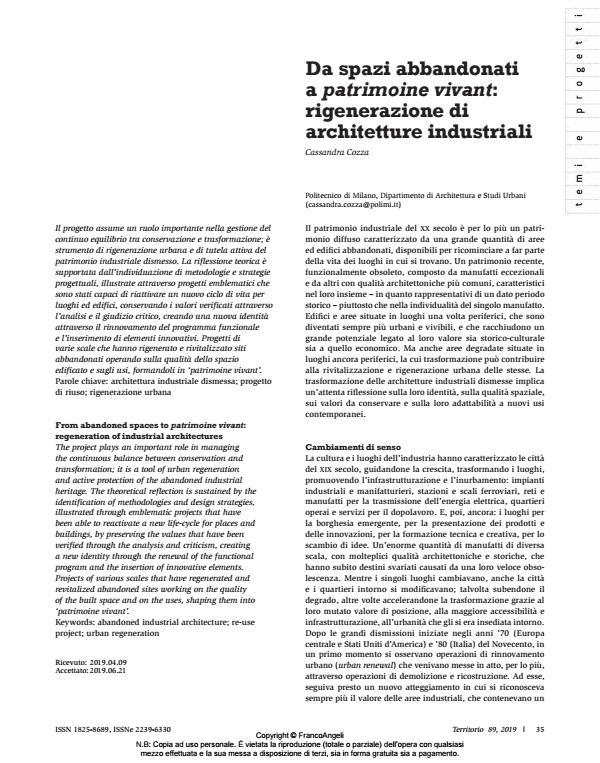From abandoned spaces to patrimoine vivant: regeneration of industrial architectures
Journal title TERRITORIO
Author/s Cassandra Cozza
Publishing Year 2019 Issue 2019/89
Language Italian Pages 9 P. 35-43 File size 1144 KB
DOI 10.3280/TR2019-089004
DOI is like a bar code for intellectual property: to have more infomation
click here
Below, you can see the article first page
If you want to buy this article in PDF format, you can do it, following the instructions to buy download credits

FrancoAngeli is member of Publishers International Linking Association, Inc (PILA), a not-for-profit association which run the CrossRef service enabling links to and from online scholarly content.
The project plays an important role in managing the continuous balance between conservation and transformation; it is a tool of urban regeneration and active protection of the abandoned industrial heritage. The theoretical reflection is sustained by the identification of methodologies and design strategies, illustrated through emblematic projects that have been able to reactivate a new life-cycle for places and buildings, by preserving the values that have been verified through the analysis and criticism, creating a new identity through the renewal of the functional program and the insertion of innovative elements. Projects of various scales that have regenerated and revitalized abandoned sites working on the quality of the built space and on the uses, shaping them into ‘patrimoine vivant’.
Keywords: Abandoned industrial architecture; re-use project; urban regeneration
- The Valuation of Idle Real Estate in Rural Areas: Analysis and Territorial Strategies Anna Richiedei, in Sustainability /2020 pp.8240
DOI: 10.3390/su12198240
Cassandra Cozza, Da spazi abbandonati a patrimoine vivant: rigenerazione di architetture industriali in "TERRITORIO" 89/2019, pp 35-43, DOI: 10.3280/TR2019-089004